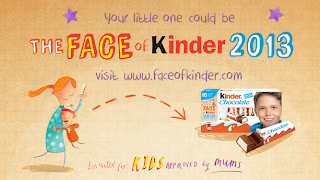 I love the cinema. For ages I just didn't go but recently I can't get enough! Maybe it's because production companies are bringing out films that I simply can't wait to see, Despicable Me 2 being the next on my list. Or maybe it's the atmosphere, and sharing the hype that goes with being one of the first to see a new release. When Iron Man 3 came out I was there for the 00:01 showing, because that's how excited I was, call me sad / nerdy, but we all have things we 'geek out' on!
I love the cinema. For ages I just didn't go but recently I can't get enough! Maybe it's because production companies are bringing out films that I simply can't wait to see, Despicable Me 2 being the next on my list. Or maybe it's the atmosphere, and sharing the hype that goes with being one of the first to see a new release. When Iron Man 3 came out I was there for the 00:01 showing, because that's how excited I was, call me sad / nerdy, but we all have things we 'geek out' on!
That being said, you can probably imagine how excited I was when, flipping through E&T magazine, I read about the latest advances in cinema sound. What with 3D now common place, sound needed to catch up with the visual feast that goes on when you go and see that latest blockbuster on the big screen, and that's where Dolby Atmos comes in.
What is Dolby Atmos?
So far, in the UK, there is only one cinema that has this new technology installed, and of course you will find it in London: Empire's Leicester Square complex. This 3D sound system will integrate up to 64 speakers, all of which can be individually isolated to pin-point sound to a certain location in the cinema. Not only that, but because of the isolation of the speakers, the sound can move, dragging you further in to the cinema experience and immersing you deep into the movie atmosphere.
 |
| Diagrams comparing the three Dolby sound systems available at present. (From the Dolby website) |
A few films have already been released supporting this new sound format, including Star Trek Into Darkness, in which people have claimed they found themselves ducking to avoid overhead space craft! This is the first time speakers will be placed in the ceiling, leading to a depth of sound never experienced before in the cinema. However it seems that the home cinema craze have already adopted this trend, Bang and Olufson, Bose, and Harmon Kardon have developed speakers specially designed to be installed into the ceiling.
Not only is the new technology exciting news for the average cinema buff, but film developers will no longer have to mix their sound to suit the number of speakers in the cinema, Dolby Atmos will do this for them, making the most of the speakers available, whether it be in a huge cinema, or a smaller independent establishment.
Rollout of this new sound technology may take some time. Cinemas will have to close in order to have their systems upgraded, and I doubt that it will be cheap. But I for one am looking forward to my cinema experience being all the more exciting!
Source of Information:
http://techland.time.com/2013/06/06/dolby-atmos/
http://www.dolby.com/gb/en/professional/technology/cinema/dolby-atmos.html
http://www.dolby.com/gb/en/consumer/technology/movie/dolby-atmos-details.html
E&T Magazine Vol. 8 Issue. 6 July 2013

















